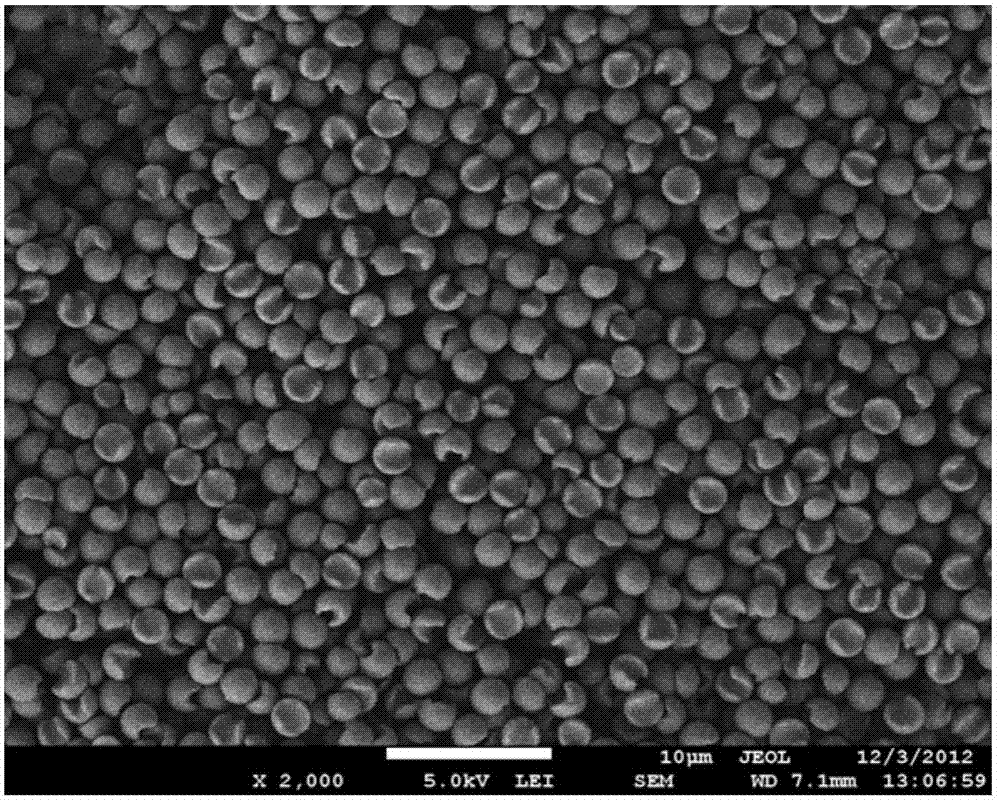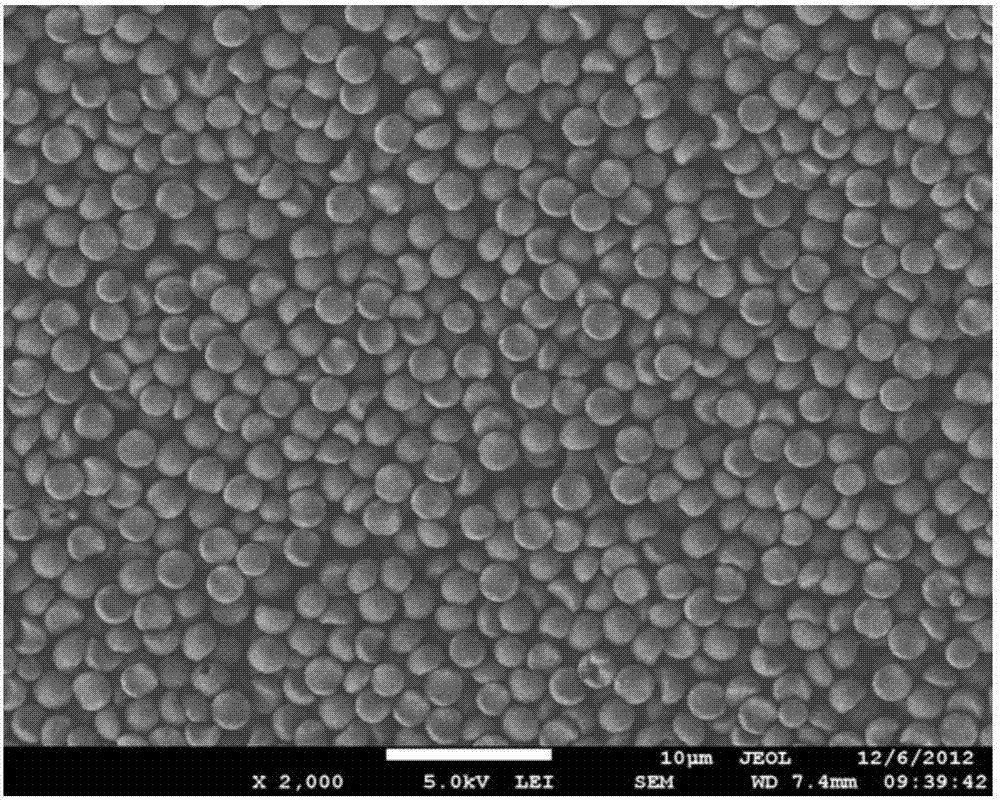Method for synthesizing polymer Janus particles with chemical and topological anisotropic properties
A synthesis method and anisotropic technology, applied in the field of materials, can solve the problems of poor particle uniformity and monodispersity, low preparation yield, no chemical composition or topological structure tunability, etc., and achieve a simple and easy post-processing method. The effect is easy to control, the experimental conditions are easy to control, and the synthesis process is simple.
- Summary
- Abstract
- Description
- Claims
- Application Information
AI Technical Summary
Problems solved by technology
Method used
Image
Examples
Embodiment 1
[0047]Disperse 200 mg of spherical polystyrene microspheres with a particle diameter of 1 μm in 20 mL of a deionized aqueous solution of sodium dodecylbenzenesulfonate at a concentration of 2.5 g / L to obtain a first mixed solution. The first mixed solution The concentration of spherical polystyrene microspheres is 10 mg / mL; 100 μL of chlorododecane (1-CD) is added to 10 mL of 2.5 g / L sodium dodecylbenzenesulfonate deionized aqueous solution , then ultrasonically emulsify with an ultrasonic cell disruptor for 60s to obtain a second mixed solution, the concentration of the organic solvent in the second mixed solution is 0.01mL / mL; the second mixed solution is mixed with the first mixed solution, The first stirring reaction was carried out at 40°C for 24 hours; the third mixed solution was obtained;
[0048] Styrene, divinylbenzene, azobisisobutyronitrile and acrylic acid were added to 10 mL of 2.5 g / L sodium dodecylbenzenesulfonate deionized aqueous solution, and then ultrasonic...
Embodiment 2 to 8
[0052] Except the content in Table 1, others are all carried out in the same manner as Example 1.
[0053] Synthesis conditions and performance parameters of the polymer Janus particles synthesized in embodiments 1 to 8
[0054]
[0055]
PUM
 Login to View More
Login to View More Abstract
Description
Claims
Application Information
 Login to View More
Login to View More - R&D
- Intellectual Property
- Life Sciences
- Materials
- Tech Scout
- Unparalleled Data Quality
- Higher Quality Content
- 60% Fewer Hallucinations
Browse by: Latest US Patents, China's latest patents, Technical Efficacy Thesaurus, Application Domain, Technology Topic, Popular Technical Reports.
© 2025 PatSnap. All rights reserved.Legal|Privacy policy|Modern Slavery Act Transparency Statement|Sitemap|About US| Contact US: help@patsnap.com



